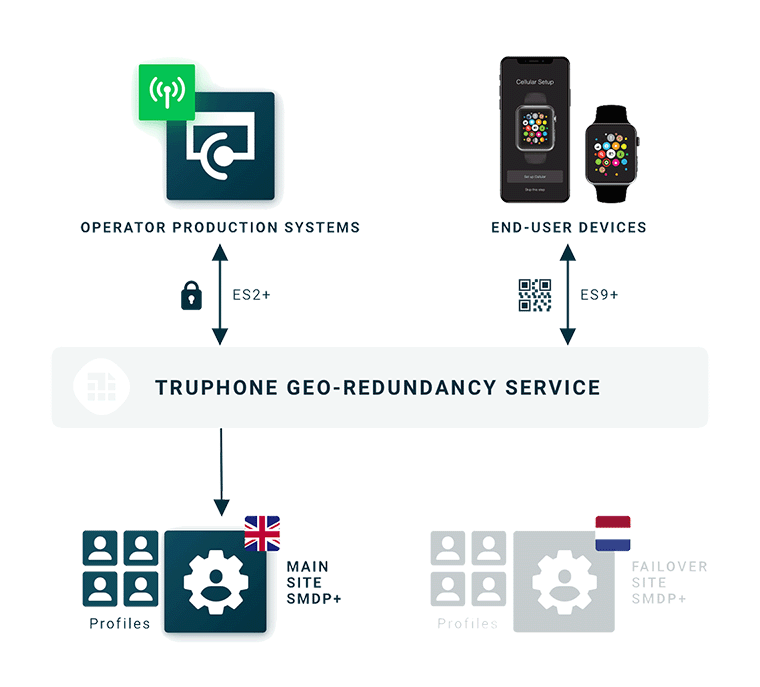How Truphone’s geo-redundant service is setting a new industry standard

 By Rameez Sultan, Technical Product Manager RSP at Truphone
By Rameez Sultan, Technical Product Manager RSP at Truphone
Last year, among the many achievements Truphone has accomplished, one of our less publicized but no less important wins was the GSMA SAS SM Certification of Truphone's Amsterdam remote SIM provisioning site.
Despite the logistical challenges that presented themselves over the course of a complicated year, Truphone was able to overcome all the necessary hurdles and in September 2020 fully certified its second site.
The GSMA Embedded SIM Specification provides a single, effective, standardised method for over-the-air provisioning of an initial operator subscription, and the ability to switch subscriptions from one operator to another. The end goal is to accelerate the market growth of eSIM and make this transition as secure as possible.
Part of the core standard set by the GSMA is the Security Accreditation Scheme (SAS) which aims to preserve the unification of embedded SIMs with remote provisioning capabilities. There are two parts to the GSMA SAS certification.
![]() Firstly, SAS-UP, which ensures that the UICC and eUICCs are produced in a secure location and that all sensitive data is managed securely.
Firstly, SAS-UP, which ensures that the UICC and eUICCs are produced in a secure location and that all sensitive data is managed securely.
![]() The second is SAS-SM, a scheme through which SM-SR, SM-DP, SMDP+ and SM-DS platform providers subject their sites to a security audit. Essentially, the purpose of the audit is to ensure that these providers have sufficient security measures in place to protect the interests of operators.
The second is SAS-SM, a scheme through which SM-SR, SM-DP, SMDP+ and SM-DS platform providers subject their sites to a security audit. Essentially, the purpose of the audit is to ensure that these providers have sufficient security measures in place to protect the interests of operators.
Perhaps you’re wondering why, when a service provider has a certified site, they need multiple sites? Well, there are a few reasons for this.
Firstly, different global legislations vary from country to country when it comes to hosting Remote Sim Provisioning sites, so the user’s data stays within their home country. Having multiple sites can resolve this puzzle and operators can avoid the major investment of setting up dedicated sites within their premises.
For Truphone, the main objective for the certification was the ability to offer its customers a geo-redundant solution. We are constantly evolving to serve the best interests of our customers by improving our services from an availability, redundancy and resilience perspective.
So, what does geo-redundancy mean for our existing and upcoming customers?
A geo-redundant solution makes sure service is available for Truphone customers in the event of any unexpected outages, whether this is hardware or software failures, emergency maintenance or even natural disasters. Should an unforeseen event like this happen, Truphone’s service availability is guaranteed by activating our secondary site from a passive to active mode in a fully automated procedure. This will ensure that there is no loss of service—very useful in a PaaS model.
 This ‘fail-over’ process works without any human intervention. It works simply by identifying the outage in real-time with the help of multiple health checkers running on the platform. Once the health checker has identified the issue as an outage, all traffic is routed to the secondary site which will serve customer needs without any service disruption.
This ‘fail-over’ process works without any human intervention. It works simply by identifying the outage in real-time with the help of multiple health checkers running on the platform. Once the health checker has identified the issue as an outage, all traffic is routed to the secondary site which will serve customer needs without any service disruption.
As with everything we champion here at Truphone, it just works.
To find out how you can benefit from our geo-redundant solution, please get in touch with us.

